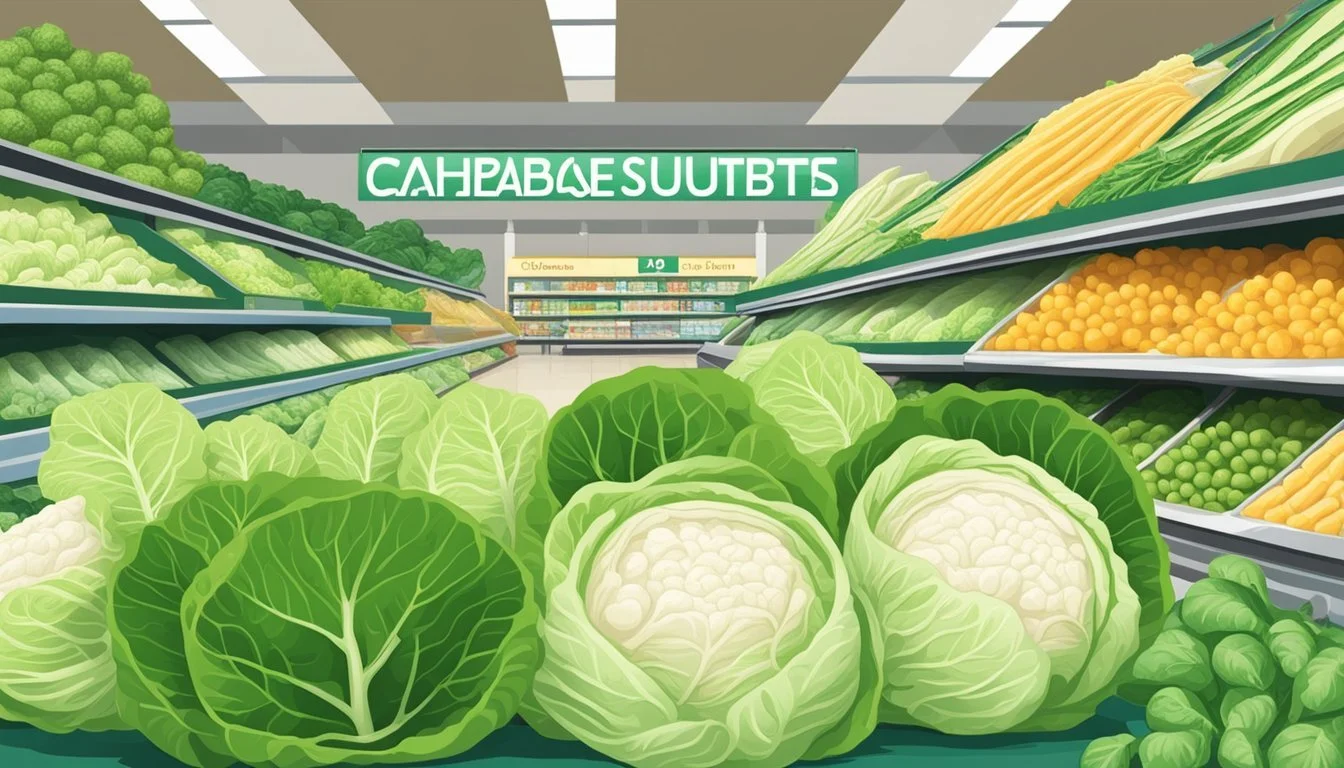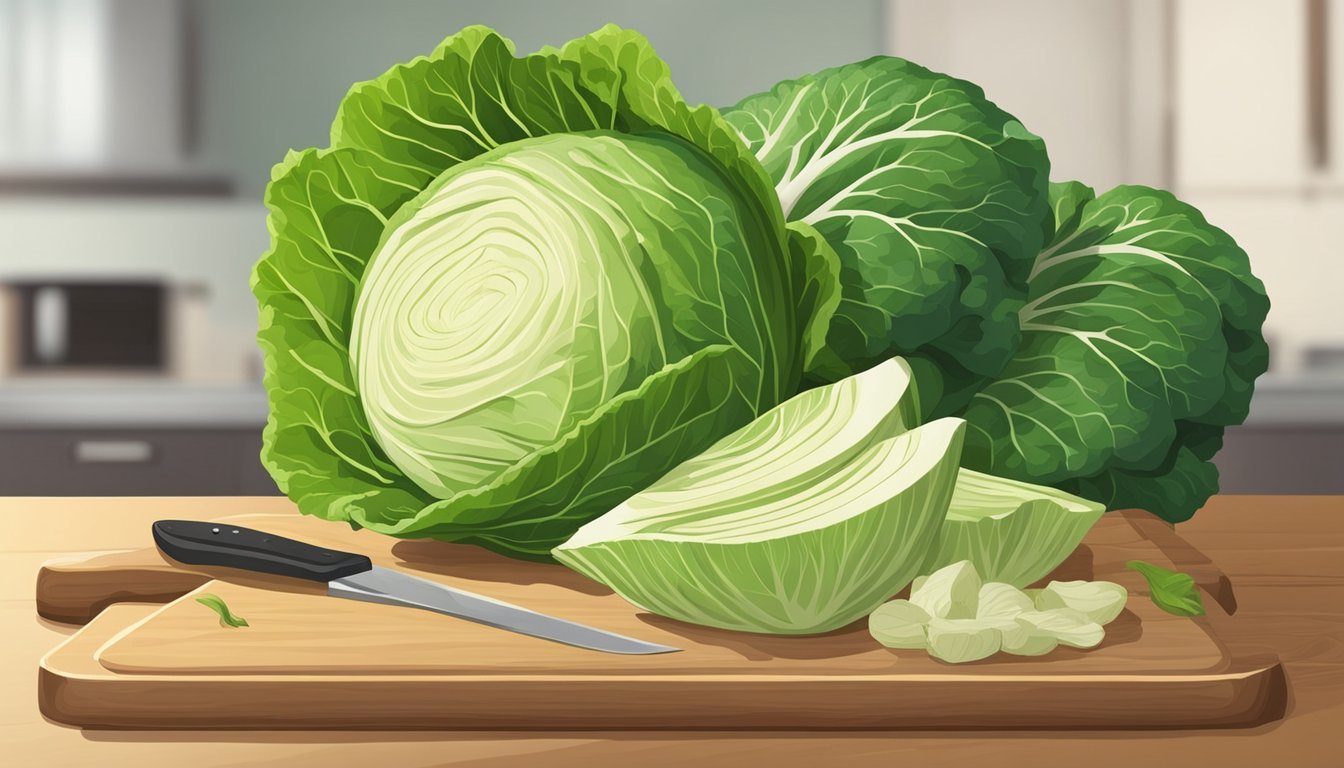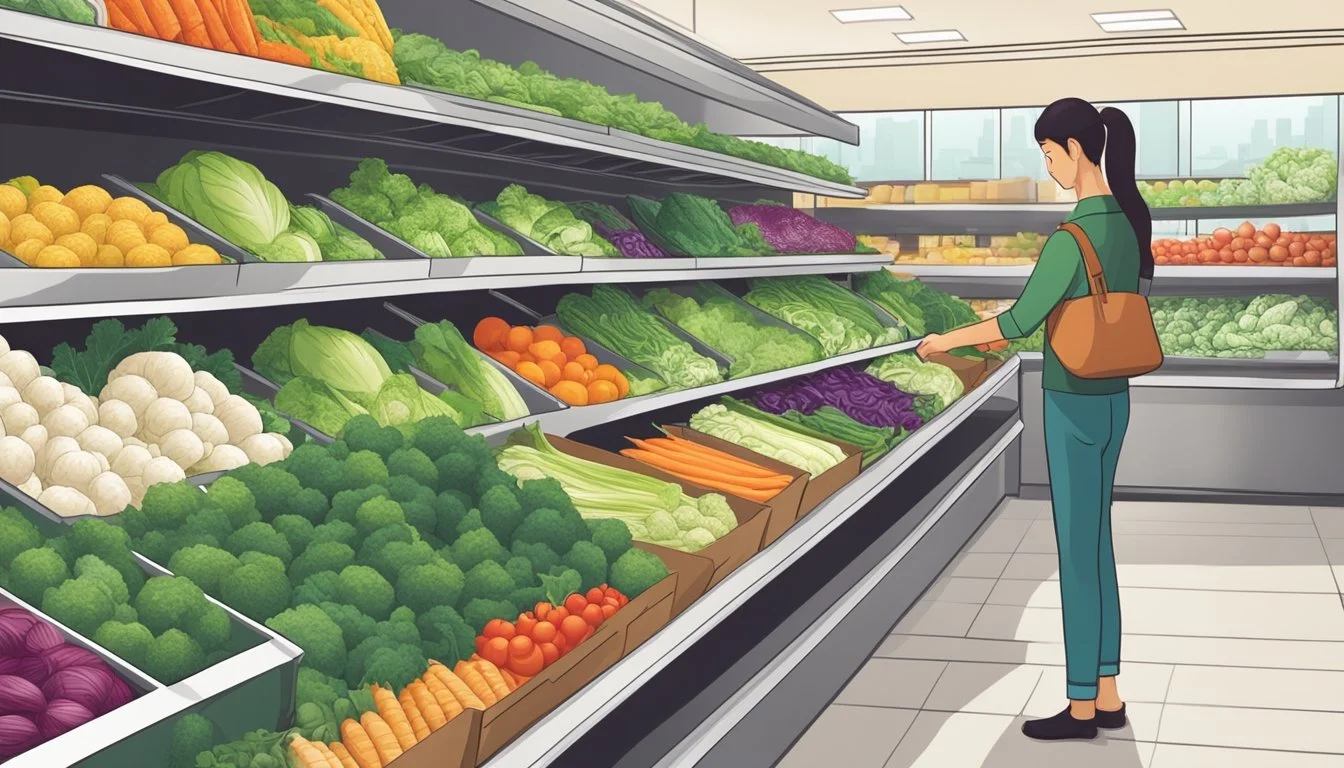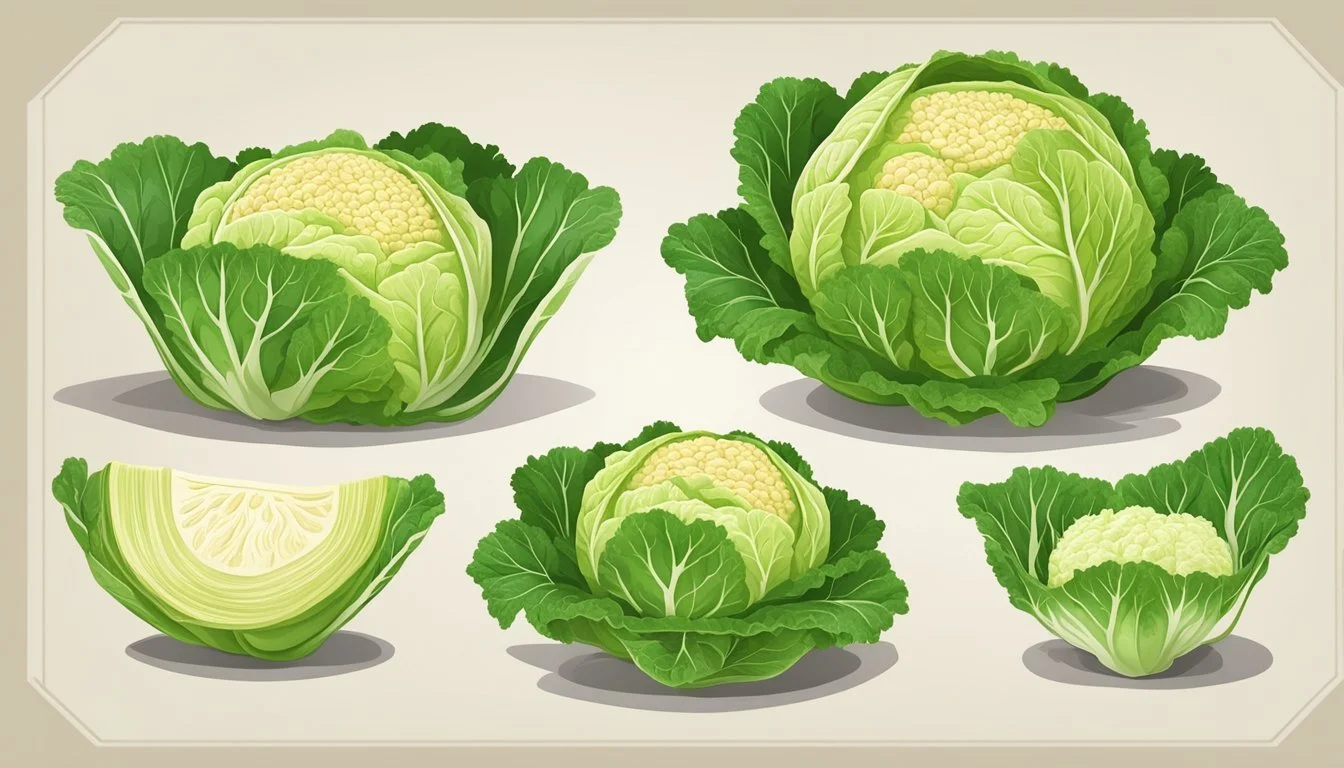Chinese Cabbage Substitutes
Best Alternatives for Your Recipes
When it comes to finding substitutes for Chinese cabbage, there are plenty of options that can offer similar textures and flavors. Some of the best alternatives include bok choy, napa cabbage, and kale. These greens are versatile and can work well in salads, stir-fries, and soups, making them ideal choices when Chinese cabbage is unavailable.
Other great substitutes worth considering include romaine lettuce and savoy cabbage. Both have the crispness and slight peppery taste that resemble Chinese cabbage. These substitutes can seamlessly integrate into your dishes without compromising on taste or texture.
For those who enjoy experimenting with flavors, Brussels sprouts and kohlrabi also make excellent replacements. Not only do they share a similar family with Chinese cabbage, but they also provide a unique twist to your culinary creations.
Understanding Chinese Cabbage
Chinese cabbage, known for its mild flavor and versatility, is a staple in many Asian cuisines. It offers a unique balance of crunch and nutrients, making it a popular choice for a variety of dishes.
Characteristics of Chinese Cabbage
Chinese cabbage, also known as Brassica rapa, is distinguishable by its elongated shape and crinkled leaves. It typically has a pale green hue and a light, crisp texture. The flavor of Chinese cabbage is mild and slightly sweet, making it suitable for both raw and cooked preparations. Due to its high water content, it adds a refreshing element to dishes without overpowering other ingredients.
Nutritional Profile
Chinese cabbage is nutrient-dense and low in calories. It is composed of over 90% water, which contributes to its crisp texture. Key nutrients include vitamin C, vitamin K, and folic acid. It also contains significant amounts of potassium, calcium, and iron, essential for maintaining healthy bodily functions. Additionally, Chinese cabbage is rich in antioxidants, which help protect cells from damage and support overall health.
Common Uses in Cooking
In cooking, Chinese cabbage is incredibly versatile. It can be used in salads, stir-fries, soups, and stews. Commonly used in kimchi, the fermented Korean dish, it provides a crunchy texture and absorbs flavors well. Another popular method is using it in hot pots, where it softens slightly but retains a pleasant bite. Whether you are sautéing, steaming, or fermenting, Chinese cabbage brings a delicate flavor and satisfying crunch to numerous recipes.
Choosing Substitutes for Chinese Cabbage
When choosing a substitute for Chinese cabbage, it's essential to consider factors such as texture, flavor, and nutritional content. Here are some of the best alternatives and what you need to know about each.
Factors to Consider When Substituting
Texture and Crunchiness: Chinese cabbage is known for its crunchy texture. When substituting, select vegetables that maintain a similar crunch, such as bok choy or napa cabbage, to ensure the dish retains the desired mouthfeel.
Flavor Profile: Chinese cabbage has a mild, slightly sweet taste. To match this, opt for similar-tasting vegetables like lettuce or kale. Be cautious with substitutes like kale, which can be slightly bitter.
Nutritional Content: Chinese cabbage is rich in vitamins and minerals, specifically vitamin C and calcium. Look for substitutes that offer comparable nutritional benefits, such as kale or spinach, to keep your meals healthful.
Leafy Greens Alternatives
Kale: Kale is a close relative of cabbage, providing a nutrient-rich option with a slightly bitter flavor. It’s an excellent source of vitamins A, C, and K. Kale works well in salads and cooked dishes, offering a similar fibrous texture to Chinese cabbage.
Spinach: Spinach offers a softer texture but matches well in dishes where the cabbage's flavor is more subdued. It’s high in iron and calcium, making it a nutritious alternative. However, it lacks the crunch that Chinese cabbage provides.
Swiss Chard: Swiss chard delivers an earthy taste and can be used in cooked dishes. Its leaves are somewhat tender compared to Chinese cabbage but retain some crunch when lightly cooked. It also provides essential nutrients like vitamins A and K.
Cruciferous Vegetables as Substitutes
Brussels Sprouts: These small, round vegetables offer a somewhat similar taste with a slightly stronger flavor. They provide a crunchy texture when cooked properly. Brussels sprouts work well in stir-fries and roasted dishes.
Bok Choy: Bok choy is another type of Chinese cabbage with a mild flavor and crunchy texture. It’s ideal for stir-frying, soups, and salads. Its tender leaves and crisp stalks are good substitutes for both the texture and flavor of Chinese cabbage.
Savoy Cabbage: Savoy cabbage has a more delicate texture with crinkly leaves, offering a mild and somewhat sweet flavor. It’s a suitable substitute in recipes requiring boiling or sautéing, providing both the crunch and mildness similar to Chinese cabbage.
In summary, choosing the right substitute for Chinese cabbage depends on the specific dish and desired attributes such as texture, flavor, and nutritional content.
Versatile Vegetable Alternatives
When Chinese cabbage isn't available, there are various other vegetables that can effectively take its place. These substitutes can be used both raw in dishes like salads and coleslaw, as well as cooked in soups and stews.
For Raw Applications
For fresh and crisp dishes, several vegetables offer great versatility. Lettuce and iceberg lettuce can replace Chinese cabbage due to their mild flavor and crunchy texture, making them ideal for salads and coleslaw.
Another excellent substitute is kale. It is sturdy and holds up well when combined with dressings, providing a nutrient-rich addition to any raw dish. Endives also offer a slightly bitter taste and crispness that can elevate raw dishes.
Bean sprouts bring a unique crunch and mild sweetness. They are perfect for adding texture to salads. Potherb mustard and komatsuna are also great choices, offering a peppery flavor and a softer leaf, respectively, to diversify raw preparations.
For Cooked Dishes
When it comes to cooked recipes, such as soups and stews, bok choy and taiwanese cabbage make excellent alternatives for Chinese cabbage. Both have a subtle sweetness that enhances the flavor of broths and hot pots.
Brussels sprouts can substitute well in dishes requiring a firmer vegetable. They soften when cooked, blending well in hearty stews. Kohlrabi, with its turnip-like flavor, is another good option, adding both crunch and nutritional value.
Savoy cabbage brings a slightly crinkled texture and mild flavor, holding up well in cooked dishes. Lastly, green beans also work effectively. They add a tender yet slightly crunchy texture to soups and stews, enriching the overall dish.
Alternatives Based on Dish Types
Various alternatives can effectively replace Chinese cabbage based on cooking applications, whether it's for fresh salads, hearty soups, quick stir-fries, or fermented favorites.
Salad and Slaw Substitutes
For salads and slaws, alternatives to Chinese cabbage include lettuce, kale, and salad greens. These greens provide a crisp texture and fresh flavor, making them suitable options.
Lettuce varieties like Romaine and Iceberg offer a similar crunch. Kale, with its nutrient richness, adds a slightly bitter taste which can be balanced with sweet dressings. Salad greens, like arugula and spinach, are milder and work well in mixed green salads.
Including different textures and flavors can enhance the overall appeal of the dish.
Substitutes for Soups and Stews
When it comes to soups and stews, Bok Choy, Savoy cabbage, and Kohlrabi are excellent substitutes. These vegetables can withstand long cooking times and maintain their structure.
Bok Choy provides a similar sweetness and slight crispness. Savoy cabbage has a tender texture and slightly sweeter flavor than standard green cabbage. Kohlrabi, with its mild and slightly peppery taste, can add unique notes to broths.
These options can deliver the necessary heartiness and texture for hearty soups and stews.
Stir-Fries and Steamed Options
For stir-fries and steamed dishes, Brussels sprouts, Taiwanese cabbage, and Komatsuna are recommended.
Brussels sprouts offer a compact and flavorful bite, especially when halved. Taiwanese cabbage, also known as flat cabbage, has a similar sweetness and works well in both stir-fries and steaming. Komatsuna has tender leaves and a mild taste, blending seamlessly into various Asian dishes.
These vegetables ensure versatility and retain their crunch under high heat.
Substitutes in Fermented and Pickled Preparations
For fermented and pickled preparations such as kimchi and sauerkraut, Napa cabbage, potherb mustard, and bean sprouts can be used.
Napa cabbage remains a primary choice for traditional kimchi due to its texture and ability to absorb flavors. Potherb mustard can add an interesting twist with its slightly spicy leaves. Bean sprouts, though different in texture, can work well in quick pickles due to their crispness and ability to absorb brine.
Each of these substitutes allows for creative yet authentic flavors in fermented dishes.
Substitutes Based on Texture and Flavor Profiles
When substituting for Chinese cabbage, it's crucial to consider both the texture and flavor profiles to ensure the dish retains its desired characteristics. Below are alternatives categorized by their texture and flavor similarities to Chinese cabbage.
Crunchy and Sweet Alternatives
For those looking for substitutes that offer a crunchy texture and sweet flavor, Napa cabbage and bok choy are excellent choices.
Napa cabbage provides a similar crunch and is slightly sweet, making it a direct substitute in salads and stir-fries. To use it, simply chop it as you would Chinese cabbage.
Bok choy, another crunchy vegetable, offers a mild sweetness. It works well in soups and other cooked dishes. The white stalks provide the needed crunch while the green leaves offer a tender contrast.
Bitter and Tender Alternatives
If the recipe calls for a more bitter taste and tender texture, kale and Swiss chard fit the bill.
Kale has a robust flavor and is notably bitter, especially when raw. Its texture softens when cooked, making it suitable for soups and stews. Use it in a 1:1 ratio for cooked dishes.
Swiss chard also offers a slight bitterness and tender leaves that cook down nicely. It is a good substitute in dishes where a tender vegetable is needed, such as sautéed or steamed applications.
By choosing the right substitute based on texture and flavor profile, maintaining the balance of your dish becomes much easier.
Nutritional Considerations in Substitutes
When choosing substitutes for Chinese cabbage, it is essential to consider the nutritional profiles of alternatives. Various options offer ample fiber, vitamins, and minerals, useful for different dietary needs.
Fiber and Vitamin-Rich Options
Many Chinese cabbage substitutes provide substantial fiber and are rich in vitamins. Kale is a notable candidate, packed with vitamins A, K, and C, along with significant fiber content. These nutrients support immune function, bone health, and digestive well-being.
Brussels sprouts also deliver high levels of fiber along with vitamins K and C. This makes them beneficial for cardiovascular health and bone strength. Potherb mustard or komatsuna can be good sources of vitamins A and K, along with calcium, aiding in vision health and blood clotting.
Bok choy stands out with its vitamin A, C, and K content. Along with its fiber, bok choy supports overall health, especially vision and skin health. These substitutes help maintain nutritional balance while varying the diet.
Low-Calorie Substitutes for Diet Considerations
For those watching their calorie intake, several low-calorie substitutes can replace Chinese cabbage without sacrificing nutrition. Lettuce, particularly iceberg lettuce, offers a low-calorie option, though it is less nutrient-dense. It is primarily water-based, perfect for weight management and hydration.
Bean sprouts present another low-calorie alternative, providing fewer vitamins but offering some fiber and essential minerals like folate. Folate is crucial for cell function and tissue growth, making it a valuable addition to any diet.
Celery is another great low-calorie choice, known for its high water content and decent fiber levels. While not as rich in vitamins, it provides sufficient potassium, which can support heart health. By incorporating these low-calorie vegetables, one can maintain a balanced diet while managing calorie intake.
Exploring Asian Cuisine Alternatives
Finding suitable substitutes for Chinese cabbage in Asian cuisine involves both common and lesser-known vegetable options. Each alternative offers unique flavors and textures that can enhance various dishes.
Common Substitutes in Asian Dishes
Bok Choy: This leafy green is a staple in Asian cuisine and works well in stir-fries, soups, and stews. It has sturdy white stalks and tender green leaves, providing a satisfying crunch and mild flavor.
Choy Sum: With its tender stalks and mild taste, choy sum is another excellent substitute. It’s commonly used in Chinese cooking, adding a subtle sweetness and a slight bitterness that complements many dishes.
Napa Cabbage: Often found in Asian markets, napa cabbage has a delicate texture and faintly sweet flavor. It’s versatile and can be used in kimchi, hot pots, and dumplings.
Uncommon Varieties for Adventurous Chefs
Taiwanese Cabbage: Also known as flat cabbage, this variety has a slightly sweeter flavor than Napa cabbage. It’s great for hot pots and kimchi due to its tender leaves and subtle taste.
Green Swiss Chard: Though not traditional in Asian cooking, Swiss chard can be an intriguing addition. Its slightly earthy flavor and vibrant stems can add color and depth to stir-fries and soups.
Potherb Mustard: Known for its peppery kick, potherb mustard stands out in dishes needing a bit of spice. Use it sparingly to avoid overpowering other flavors.
Experimenting with these alternatives can bring new dimensions to classic Asian recipes, making them a valuable addition to any home cook’s pantry. Each option offers its own unique qualities, enhancing authenticity while allowing for personal creativity.







